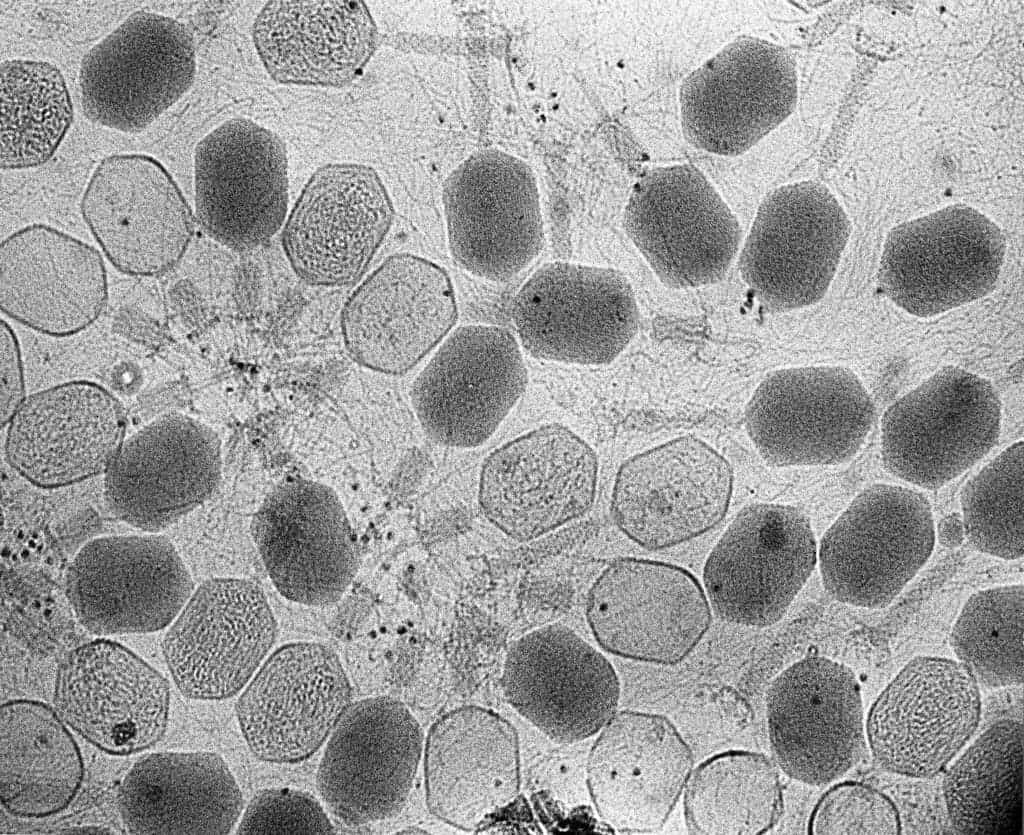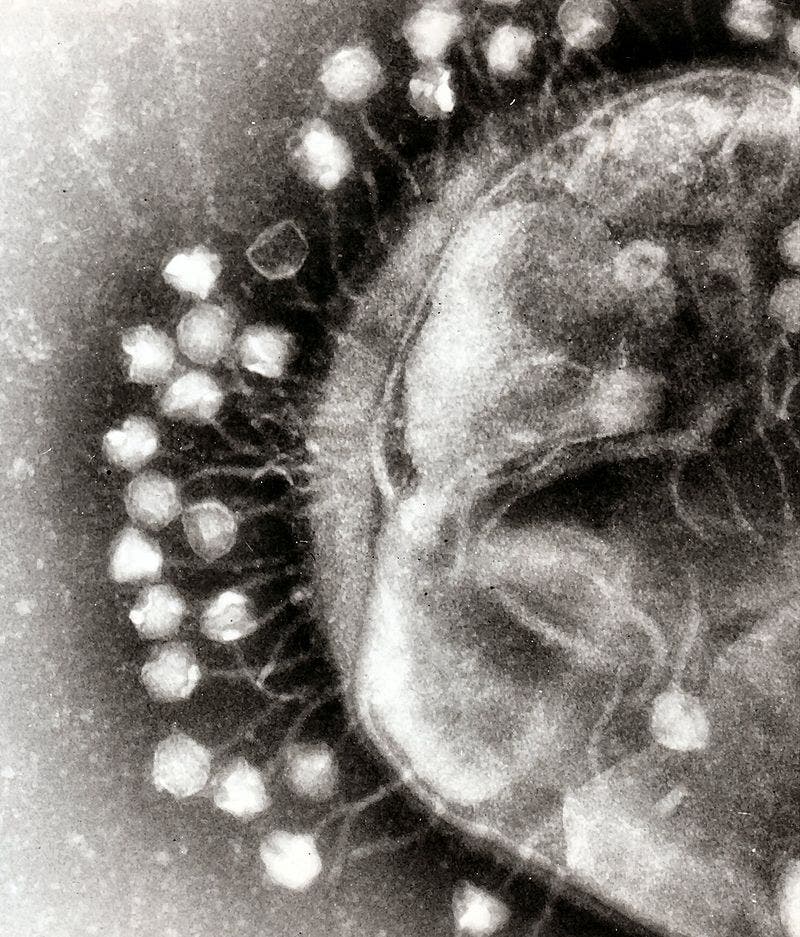Phages are some of the deadliest viruses on the planet — but they can also be some of the most helpful, because they particularly target bacteria. Phage therapy is the use of such bacteriophages to cure bacterial infections in the human body.
Felix d’Herelle co-discovered bacteriophages and conducted the first human trials for phage therapy around the time of the first World War — he was an unpaid and self-taught volunteer at the Pasteur Institute in Paris when he made this discovery. He and other doctors across Western Europe went on to successfully test phage therapy against a variety of diseases.
But if phages were so efficient in treating bacterial infections, why is it still so novel today? Why did the world at large forget about them?

Targeted killers
Well, first and foremost, the discovery of the phage had been fraught with speculations and uncertainty from the start. D’Herelle’s academic rivalry with Nobel Prize winner Jules Bordet and his lack of formal scientific education prevented him from convincing the scientific community at large that the phage was a viral entity instead of just being a bacterial enzyme, which is what Jules Bordet had wrongly claimed.
Furthermore, with the advent of antibiotics — the antibacterial ‘magic bullets’ of that time — treating infections became easier and more convenient. Off-the-shelf treatments did the job fairly well, and since these antibiotics were broad-spectrum (they killed a wide range of bacteria) they made the need of first testing for the specific pathogen responsible for the infection unnecessary.
Phage therapy, on the other hand, was highly specific. A bacteriophage had to be chosen for one specific bacterium or some of its close relatives and could require complex procedures. In addition to this, pharmaceutical companies could not patent the phage since it was naturally occurring and they couldn’t profit much off of it.
Even though the phage was later proved to be a virus with the development of the electron microscope, the advent of the world war had led to antibiotics majorly taking over and funding being directed there. But in the Eastern Bloc, particularly the USSR, things were different.

Behind the iron curtain
Sir George Eliava was the head of the bacteriological laboratory in Tbilisi, the capital of Georgia. He met Felix D’Herelle at the Pasteur Institute, was deeply impressed by his discovery and excited about its potential. He brought D’Herelle and his research to Tbilisi.
Since the Soviet Republic of Georgia was communist (and not capitalist), and pharmaceutical companies couldn’t make a profit anyway, phages were regarded with more interest. In addition, the communist states lacked access to the new flood of antibiotics the West had to offer.
Joseph Stalin, the ruler of the Soviet Union, invited D’Herelle himself, who ended up dedicating his book the Bacteriophage and the Phenomenon of Cure to Stalin. It seemed that the Soviets were close to important bacteriophage breakthroughs. But this partnership between d’Herelle and Eliava to establish an institute of phage therapy was sadly cut short.
In 1937, one of the greatest genocides in human history came to be. The Great Terror, or The Great Purge, as it was called, was Stalin’s campaign of political repression to establish himself as the sole authority in the country. It involved large-scale repression of the peasantry, ethnic cleansing, a purging of the Communist Party, a purging of intellectuals, imprisonment, and plenty of (often arbitrary) executions. Historians estimate that up to 1.2 million people were killed in the Great Purge. Among the many intellectuals who were branded as “enemy of the people” and killed was also George Eliava.
It is rumored that Eliava had a feud with Lavrentiy Beria, the Chief of Stalin’s secret police, as the two were competing for the love of the same woman — though in truth, just being an intellectual was enough to get you arrested and killed.
As Eliava was executed, d’Herelle became a persona non grata and was forced to return to France. He was barred entry into Georgia by the Soviets and his book was banned.
However, the institute he founded powered on, eventually becoming the center for the production and development of bacteriophage drugs, pumping out more than 2 tons of phages each week. They had widespread use, including treatment of soldiers in the Red Army. As a routine part of treatment in clinics and hospitals, bacteriophages were available at low prices, as ointments, drops, pills, and syrups. Many of those products are still sold today.
But because phage therapy in the USSR was military-funded, it was classified information and the rest of the world never heard about it due to the regime’s secrecy. As the Soviet Union made efforts to isolate itself from the rest of the world, an “Iron Curtain” fell over Europe, virtually shielding everything that was happening in the Soviet sphere of influence from the rest of the world. This caused a rift in the scientific community, negatively affecting much research — but prevented West skepticism against phages from having any impact. There were plenty of ups and downs, but bacteriophage research continued in Georgia.
In the west, interest in bacteriophages had waned even more, and over time phage therapy has basically acquired a ‘Soviet taint’ — with many researchers feeling that Soviet testing protocols were not as rigorous as those followed by the West.
A comeback

In recent years, bacteriophage therapy is becoming relevant again — mainly because of the emergence of antibiotic-resistant bacteria. Bacteriophages are effective against superbugs, multiple drug-resistant bacteria, bacteria resistant to almost every weapon we have.
Our understanding of bacteriophages and how to use them has also improved significantly, and several companies are already working to introduce phage treatments. Intralytix was the first company to get FDA approval for the use of a cocktail of bacteriophages. This combination of phages can be patented by the company and genetically modified phage treatments are also under trial procedures.
Even though it does still seem counterintuitive to inject ourselves with the deadliest beings on the planet, the enemy of my enemy is my friend — and viruses can help protect us from some of the worst bacteria out there. Phage therapy provides a ray of hope amongst the ever-growing antibiotic apocalypse and might just be the way through it.









